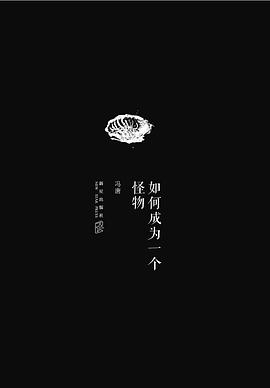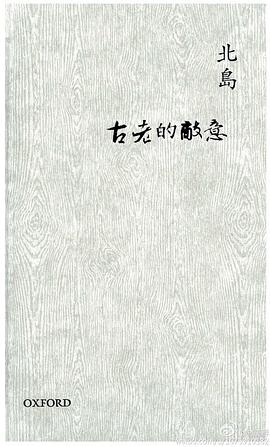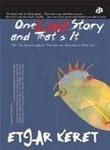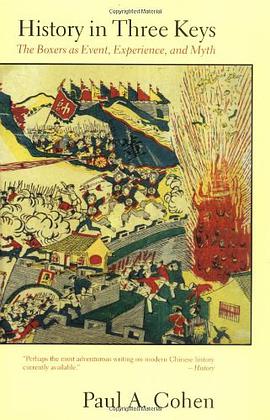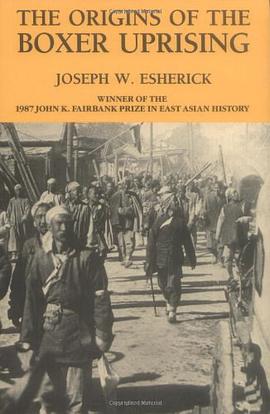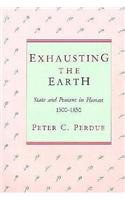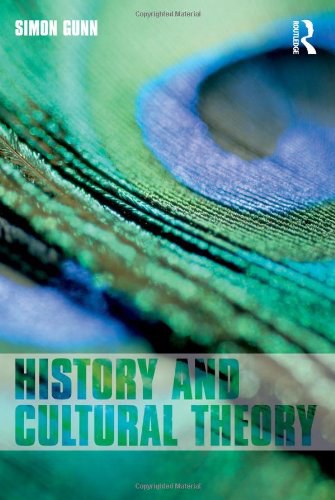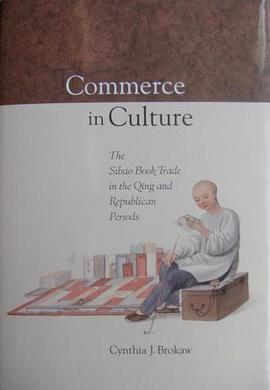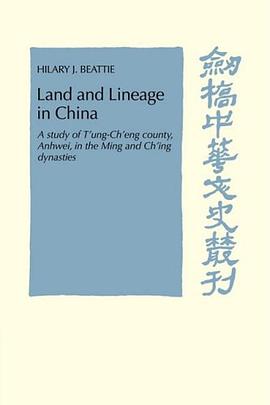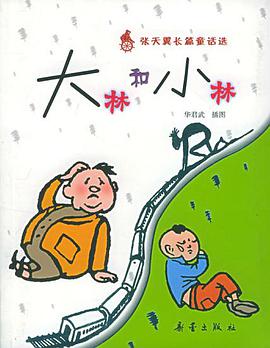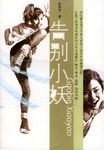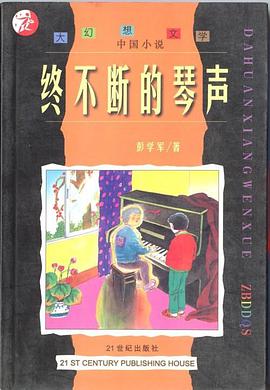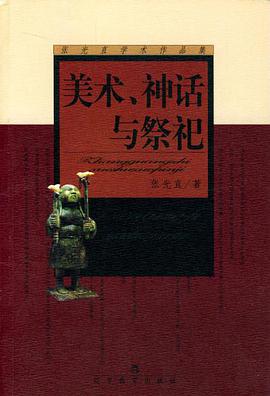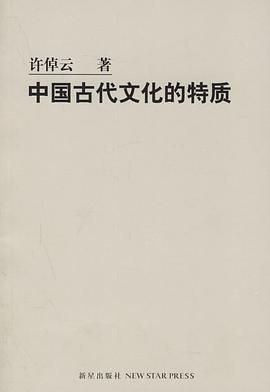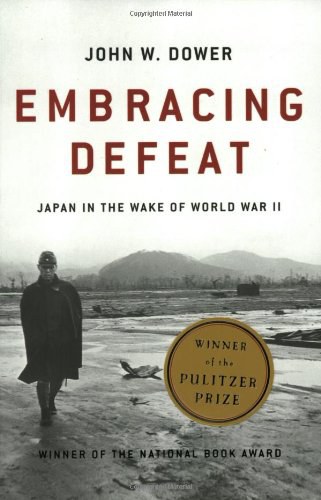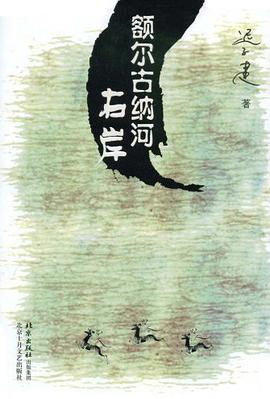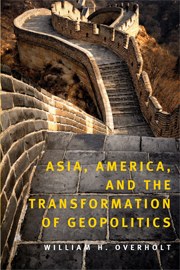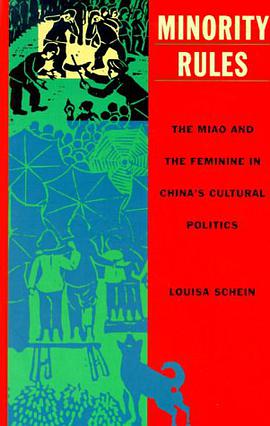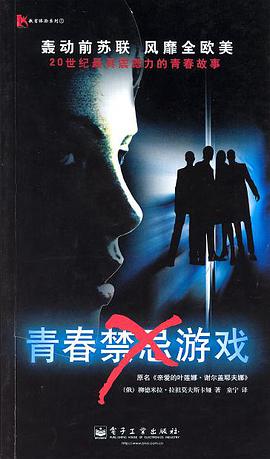farseer - 标记
古老的敵意 豆瓣
作者:
北島
牛津大學出版社
2012
- 3
7月20日,北岛在2011香港书展上作题为“古老的敌意”的演讲。他援引诗人里尔克《安魂曲》中的名句——“正因为生活和伟大的作品之间/总存在某种古老的敌意……”他认为一个好的写作者应该有意识地保持与所处时代、母语以及自身的某种紧张关系,并在演讲中批判“粉丝文化”。
大约一个世纪前,奥地利诗人里尔克在《安魂曲》中写下这样的诗句:"因为生活和伟大的作品之间/总存在某种古老的敌意"。
二十世纪开始的岁月,在汉堡和不来梅之间的小镇沃尔普斯韦德(Worpswede)聚集着不少艺术家和作家,包括里尔克。他们一起听音乐会、参观博物馆,在狂欢之夜乘马车郊游。其中有两位年轻漂亮的女画家就像姐妹俩,金发的叫波拉,黑发的叫克拉拉。里尔克更喜欢金发的波拉,但不愿意破坏这对理想的双重影像。在观望中,一场混乱的追逐组合,待尘埃落定,波拉跟别人订了婚。里尔克选择了黑发的克拉拉,与她结婚生女。七年后,波拉因难产死去,里尔克写下这首《安魂曲》献给她。
这段插曲,或许有助于我们了解里尔克的诗歌写作与个人生活的关系。纵观里尔克的一生,可谓动荡不安,仅在第一次世界大战爆发前的四年间,他就在欧洲近五十个地方居住或逗留。里尔克在《秋日》一诗中写道:"谁此刻没有房子,就不必建造,/谁此刻孤独,就永远孤独"。这正是他漂泊生涯的写照。
里尔克的这两句诗"因为生活和伟大的作品之间/总存在某种古老的敌意",对我来说有如持久的钟声,绵延不绝,意味深长,尤其在当今乱世,或许可引发更深一层的思考--对于以写作为毕生事业的人来说,我们今天应该如何生活、如何写作、如何理解并处理生活与写作的关系。
所谓"古老的敌意",从字面上来看,"古老的"指的是原初的,带有某种宿命色彩,可追溯到文字与书写的源头;"敌意"则是一种诗意的说法,指的是某种内在的紧张与悖论。
大约一个世纪前,奥地利诗人里尔克在《安魂曲》中写下这样的诗句:"因为生活和伟大的作品之间/总存在某种古老的敌意"。
二十世纪开始的岁月,在汉堡和不来梅之间的小镇沃尔普斯韦德(Worpswede)聚集着不少艺术家和作家,包括里尔克。他们一起听音乐会、参观博物馆,在狂欢之夜乘马车郊游。其中有两位年轻漂亮的女画家就像姐妹俩,金发的叫波拉,黑发的叫克拉拉。里尔克更喜欢金发的波拉,但不愿意破坏这对理想的双重影像。在观望中,一场混乱的追逐组合,待尘埃落定,波拉跟别人订了婚。里尔克选择了黑发的克拉拉,与她结婚生女。七年后,波拉因难产死去,里尔克写下这首《安魂曲》献给她。
这段插曲,或许有助于我们了解里尔克的诗歌写作与个人生活的关系。纵观里尔克的一生,可谓动荡不安,仅在第一次世界大战爆发前的四年间,他就在欧洲近五十个地方居住或逗留。里尔克在《秋日》一诗中写道:"谁此刻没有房子,就不必建造,/谁此刻孤独,就永远孤独"。这正是他漂泊生涯的写照。
里尔克的这两句诗"因为生活和伟大的作品之间/总存在某种古老的敌意",对我来说有如持久的钟声,绵延不绝,意味深长,尤其在当今乱世,或许可引发更深一层的思考--对于以写作为毕生事业的人来说,我们今天应该如何生活、如何写作、如何理解并处理生活与写作的关系。
所谓"古老的敌意",从字面上来看,"古老的"指的是原初的,带有某种宿命色彩,可追溯到文字与书写的源头;"敌意"则是一种诗意的说法,指的是某种内在的紧张与悖论。
One Last Story and That's It 豆瓣
作者:
Etgar Keret
Katha
2005
History in Three Keys 豆瓣
作者:
Paul A. Cohen
Columbia University Press
1998
- 4
Examines the craft of historiography against the backdrop of the Chinese Boxer Rebellion of 1898-1900. The text juxtaposes the account of historians with those of the participants and witnesses and sets these perspectives against the range of popular myths about the Boxers.
The Origins of the Boxer Uprising 豆瓣 Goodreads
作者:
Joseph W. Esherick
University of California Press
1988
- 8
In the summer of 1900, bands of peasant youths from the villages of north China streamed into Beijing to besiege the foreign legations, attracting the attention of the entire world. Joseph Esherick reconstructs the early history of the Boxers, challenging the traditional view that they grew from earlier anti-dynastic sects, and stressing instead the impact of social ecology and popular culture.
Exhausting the Earth 豆瓣
作者:
Peter C. Perdue
Harvard University Asia Center
1987
- 9
History and Cultural Theory 豆瓣
作者:
Simon Gunn
Routledge
2006
- 7
History and Cultural Theory provides an introduction to the relationship between contemporary cultural theory and the study of history. Reflecting the growing influence on history of theorists such as Pierre Bourdieu, Michel Foucault and Gayatri Spivak, it provides a clear and accessible guide to their thought and explains the implications of their ideas for historical studies. It offers specific examples of how historians apply the insights of cultural theory in their own work. Provides a guide to cutting-edge ideas in historical thought.
Commerce in Culture 豆瓣
作者:
Cynthia J. Brokaw
Harvard University Asia Center
2007
- 4
Sibao today is a cluster of impoverished villages in the mountains of western Fujian. Yet from the late seventeenth through the early twentieth century, it was home to a flourishing publishing industry. Through itinerant booksellers and branch bookshops managed by Sibao natives, this industry supplied much of south China with cheap educational texts, household guides, medical handbooks, and fortune-telling manuals.
It is precisely the ordinariness of Sibao imprints that make them valuable for the study of commercial publishing, the text-production process, and the geographical and social expansion of book culture in Chinese society. In a study with important implication for cultural and economic history, Cynthia Brokaw describes rural, lower-level publishing and bookselling operation at the end of the imperial period. Commerce in Culture traces how the poverty and isolation of Sibao necessitated a bare-bones approach to publishing and bookselling and how the Hakka identity of the Sibao publishers shaped the configuration of their distribution networks and even the nature of their publication.
Sibao's industry reveals two major trends in print culture: the geographical extension of commercial woodblock publishing to hinterlands previously untouched by commercial book culture and the related social penetration of texts to lower-status levels of the population.
It is precisely the ordinariness of Sibao imprints that make them valuable for the study of commercial publishing, the text-production process, and the geographical and social expansion of book culture in Chinese society. In a study with important implication for cultural and economic history, Cynthia Brokaw describes rural, lower-level publishing and bookselling operation at the end of the imperial period. Commerce in Culture traces how the poverty and isolation of Sibao necessitated a bare-bones approach to publishing and bookselling and how the Hakka identity of the Sibao publishers shaped the configuration of their distribution networks and even the nature of their publication.
Sibao's industry reveals two major trends in print culture: the geographical extension of commercial woodblock publishing to hinterlands previously untouched by commercial book culture and the related social penetration of texts to lower-status levels of the population.
Land and Lineage in China 豆瓣
作者:
Hilary J. Beattie
Cambridge University Press
2009
- 2
大林和小林 豆瓣
7.8 (11 个评分)
作者:
张天翼
新蕾出版社
2001
- 10
《大林和小林》讲述了大林和小林是一对亲兄弟,他们的父母因贫苦而早早死去,两兄弟只好外出谋生。大林被富翁叭哈收养,改名唧唧,天天好吃懒做,养尊处优,在 200个仆人伺候下,变得肥胖无比。小林在资本家四四格的工厂里做童工,饱受欺凌和虐待,他和小伙伴们不甘心被四四格变成鸡蛋吃掉的命运,奋起反抗,打死了四四格。小林四处做工,最后当上火车司机。大林与蔷薇公主结婚,坐火车去海滨,与当火车司机的小林相遇。小林他们需要用火车为灾民运送救济物资,举行了罢工,大林叫来怪物推火车,怪物却把火车推到了大海里,大林漂流到了一个遍地是财宝的富翁岛上,饿死了。
毛毛 豆瓣
9.1 (16 个评分)
作者:
[德] 米切尔·恩德
译者:
李士勋
二十一世纪出版社
2000
- 2
“毛毛”是一个不知年龄,来自何方的小女孩,她拥有常人所没有的“灵敏听力”,只要她倾听朋友的绝望心声或好友们的吵架声,就能在很自然的情况下,解决他们的问题和纷争。甚至她还能使坏人倾吐他们的阴谋诡计。由于受城市里无处不在的灰先生蒙骗,人们开始醉心于追求所谓合理化、机械的生活,置亲情与良心于不顾,因此毛毛冒着生命危险,见到了时光老人侯拉博士,在时间王国里她发现了世界和人类的大秘密,即“时间就是生命”。生命的诞生即生命的花朵盛开,当生命结束时,又会有同样的生命之花再度绽放……懂得这庄严而神圣的时间秘密的“毛毛”,将回到现实世界勇斗那些灰先生,并终将获得胜利。
中国古代文化的特质 豆瓣
作者:
许倬云
新星出版社
2006
- 6
这本小书包含了两个部分:五篇对于中国文化与历史的观察,是1987年6月下旬在台湾清华大学历史研究所的讲演。另有四篇是1985年在清华大学的讲演,附属在沈君山兄所授的通识课程内,其内容则是讨论近代科学革命的背景及其未曾在中国发生的一些讨论。至于附录一篇,则是用突破与转化的观念,比较几个古代文明的发生,作为上述九篇的背景资料。
书中这几篇文字所论,大致反映我近两三年来对于中国历史的一番省思。既是个人的观点,自是解释多于叙述及分析,也自然不能与别人的看法完全一致。每个史学工作者,隔几年有番省思,至少有且于梳理自己的思路。再隔几年,我的观点必然会有改变,因此,这本小书也不这是一已心路历程的里程碑而已。称不上定论,理淡到成熟。只盼过几年之后,自己会有更为周全的诠释,代表另一阶段的了解。
书中这几篇文字所论,大致反映我近两三年来对于中国历史的一番省思。既是个人的观点,自是解释多于叙述及分析,也自然不能与别人的看法完全一致。每个史学工作者,隔几年有番省思,至少有且于梳理自己的思路。再隔几年,我的观点必然会有改变,因此,这本小书也不这是一已心路历程的里程碑而已。称不上定论,理淡到成熟。只盼过几年之后,自己会有更为周全的诠释,代表另一阶段的了解。
Embracing Defeat: Japan in the Wake of World War II Goodreads 豆瓣
作者:
John W. Dower
W. W. Norton & Company
2000
- 6
其它标题:
Embracing Defeat
Winner of the Pulitzer Prize, the 1999 National Book Award for Nonfiction, finalist for the Lionel Gelber Prize and the Kiriyama Pacific Rim Book Prize, Embracing Defeat is John W. Dower's brilliant examination of Japan in the immediate, shattering aftermath of World War II.
Drawing on a vast range of Japanese sources and illustrated with dozens of astonishing documentary photographs, Embracing Defeat is the fullest and most important history of the more than six years of American occupation, which affected every level of Japanese society, often in ways neither side could anticipate. Dower, whom Stephen E. Ambrose has called "America's foremost historian of the Second World War in the Pacific," gives us the rich and turbulent interplay between West and East, the victor and the vanquished, in a way never before attempted, from top-level manipulations concerning the fate of Emperor Hirohito to the hopes and fears of men and women in every walk of life. Already regarded as the benchmark in its field, Embracing Defeat is a work of colossal scholarship and history of the very first order.
Drawing on a vast range of Japanese sources and illustrated with dozens of astonishing documentary photographs, Embracing Defeat is the fullest and most important history of the more than six years of American occupation, which affected every level of Japanese society, often in ways neither side could anticipate. Dower, whom Stephen E. Ambrose has called "America's foremost historian of the Second World War in the Pacific," gives us the rich and turbulent interplay between West and East, the victor and the vanquished, in a way never before attempted, from top-level manipulations concerning the fate of Emperor Hirohito to the hopes and fears of men and women in every walk of life. Already regarded as the benchmark in its field, Embracing Defeat is a work of colossal scholarship and history of the very first order.
额尔古纳河右岸 Goodreads 豆瓣
8.6 (86 个评分)
作者:
迟子建
北京十月文艺出版社
2005
- 12
这是第一部描述我国东北少数民族鄂温克人生存现状及百年沧桑的长篇小说。似一壁饱得天地之灵气,令人惊叹却难得其解的神奇岩画;又似一卷时而安恬、时而激越,向世人诉说人生挚爱与心灵悲苦的民族史诗。
著名女作家迟子建,以一位年届九旬,这一弱小民族最后一个酋长女人的自述,向我们娓娓道来——
在中俄边界的额尔古纳河右岸,居住着一支数百年前自贝加尔湖畔迁徙而至,与驯鹿相依为命的鄂温克人。他们信奉萨满,逐驯鹿喜食物而搬迁、游猎,在享受大自然恩赐的同时也艰辛备尝,人口式微。他们在严寒、猛兽、瘟疫……的侵害下求繁衍,在日寇的铁蹄、“文革”的阴云……乃至种种现代文明的挤压下求生存。他们有大爱,有大痛,有在命运面前的殊死抗争,也有眼睁睁看着整个民族日渐衰落的万般无奈。然而,一代又一代的爱恨情仇,一代又一代的独特民风,一代又一代的生死传奇,显示了弱小民族顽强的生命力及其不屈不挠的民族精神。
小说语言精妙,以简约之美写活了一群鲜为人知、有血有肉的鄂温克人。小说以小见大,以一曲对弱小民族的挽歌,写出了人类历史进程中的某种悲哀,其文学主题具有史诗品格与世界意义。
著名女作家迟子建,以一位年届九旬,这一弱小民族最后一个酋长女人的自述,向我们娓娓道来——
在中俄边界的额尔古纳河右岸,居住着一支数百年前自贝加尔湖畔迁徙而至,与驯鹿相依为命的鄂温克人。他们信奉萨满,逐驯鹿喜食物而搬迁、游猎,在享受大自然恩赐的同时也艰辛备尝,人口式微。他们在严寒、猛兽、瘟疫……的侵害下求繁衍,在日寇的铁蹄、“文革”的阴云……乃至种种现代文明的挤压下求生存。他们有大爱,有大痛,有在命运面前的殊死抗争,也有眼睁睁看着整个民族日渐衰落的万般无奈。然而,一代又一代的爱恨情仇,一代又一代的独特民风,一代又一代的生死传奇,显示了弱小民族顽强的生命力及其不屈不挠的民族精神。
小说语言精妙,以简约之美写活了一群鲜为人知、有血有肉的鄂温克人。小说以小见大,以一曲对弱小民族的挽歌,写出了人类历史进程中的某种悲哀,其文学主题具有史诗品格与世界意义。
Asia, America, and the Transformation of Geopolitics 豆瓣
作者:
William H. Overholt
Cambridge University Press
2007
- 11
American security and prosperity now depend on Asia. William H. Overholt offers an iconoclastic analysis of developments in each major Asian country, Asian international relations, and U.S. foreign policy. Drawing on decades of political and business experience, he argues that obsolete Cold War attitudes tie the U.S. increasingly to an otherwise isolated Japan and obscure the reality that a U.S.-Chinese bicondominium now manages most Asian issues. Military priorities risk polarizing the region unnecessarily, weaken the economic relationships that engendered American preeminence, and ironically enhance Chinese influence. As a result, despite its Cold War victory, U.S. influence in Asia is declining. Overholt disputes the argument that democracy promotion will lead to superior development and peace, and forecasts a new era in which Asian geopolitics could take a drastically different shape. Covering Japan, China, Russia, Central Asia, India, Pakistan, Korea, and South-East Asia, Overholt offers invaluable insights for scholars, policymakers, business people, and general readers.
Minority Rules 豆瓣
作者:
Louisa Schein
Duke University Press Books
2000
- 2
Louisa Schein’s study of cultural production in post-Mao China begins and ends with the Miao, one of China's 56 officially designated minority nationalities. As she points out in her introduction, however, “this book is about China as much as it is about the Miao” (p. 2). Indeed, this book is very much about the complementary and indispensable relation that each bears to the other.
Schein's focus is on cultural production, and much of the text consists of a close examination of representation practices through which “Miao” has emerged as a historical and ethnic identity. The Miao live scattered across seven provinces in southwestern China and four southeast Asian nations, speak dozens of mutually unintelligible dialects and refer to themselves with a variety of names, although “Miao” is not among them. Nevertheless, Miao, originally a derogative imposed by outsiders, has become an official standard and an accepted self-description.
Schein begins by sketching the continuous but unequal relationship between Miao and Han from the late imperial period through the 1990s. Over this period, the Miao have been brought under increasingly tight political, economic, and cultural control by the Chinese state. This trajectory of political and cultural power is reflected in a series of discourses and practices through which the Miao have been constructed as Other. In the 19th century, the Miao were depicted as exotic, dangerous, and promiscuous in popular picture albums. During the Republican period, the Miao were pressured to assimilate, often enduring humiliation and physical coercion. After 1949, a sincere effort to account for ethnic diversity within the new nation-state was first interrupted by the Great Leap Forward and then effectively negated by the conformist pressures of the Cultural Revolution. In the post-Mao era, as markets have overtaken mass movements and top-down policy declarations, new opportunities as well as challenges to Miao cultural agency have emerged.
After the founding of the People's Republic in 1949, China's new leaders sought to realize the state as “a social order of national multiethnicity” (p. 73). Transforming newly fixed ethnic categories into functioning social and political units relied, in part, on the work of young minority men and women who were recruited into training schools called “Nationalities Institutes.” Some were groomed as political cadres and sent back to their communities; those with appropriate talents were trained as artists and performers. Schein's poignant profiles of aging members of this cohort provide valuable insight into the personal and collective struggle entailed in interpreting and accommodating unpredictable shifts in state policy and economic conditions. Once in great demand for their value in promulgating the message of ethnic unity and socialist development, these now-faded stars were highly skilled and well-trained performers. As state-sponsored cultural professionals, they developed highly stylized, sanitized repertoires that combined such elements of traditional Miao culture as courtship songs and shamanic dances with the techniques and aesthetics of ballet and other Western art forms.
With the advent of the post-Mao economic reforms, however, these stylized representations were rejected as artificial and inauthentic by both Chinese consumers and global markets. Although the most successful performers still enjoyed the prestige and privilege of an elite status in their adopted urban milieu, most found themselves eclipsed by rough-hewn rural troupes who were better able to satisfy the fantasies of urban Chinese consumers and foreign tourists.
The marketization of ethnic images entailed the emergence of new forms of exploitation as well as new opportunities for cultural agency. Schein's descriptions make it clear that neither trend dominates the current process. For instance, the commodification of authentic, ethnic, female Miao bodies certainly serves to reify ethnic and gender relationships, reproducing the asymmetries of power among Han and Miao, male and female. Many Miao women are distressed by the indignity of being subject to the yearning, idealizing, and sometimes sexualizing gaze of the consumer. Yet in the interactions between some Miao women and male Han tourists, officials, and other expectant consumers of exotic, Miao femininity, Schein discerns creative attempts to reclaim individual and collective agency. In one of the most insightful passages in the book, she describes how some young Miao women respond to these potentially exploitative situations. When recruited by Han photographers to appear in traditional festival garb, some opt out entirely, whereas others have become habituated to the point that they are able to manipulate the procedure and dictate the terms of remuneration (p. 211). In one case, young women made their own arrangement to sing privately for an amateur Han folklorist, defying (and ultimately drawing a reprimand from) their elders. Here, Schein shows that Miao women have been able to subvert both the expectations of their own communities and the “urban gaze” of Han tourists. By taking control of the commodification process, their actions transcend mere resistance to domination.
In Minority Rules, Louisa Schein skillfully combines theoretical debate with detailed and engaging description in a work that is as intellectually insightful as it is ethnographically informative. As a study of the Miao and of the dialectics of gender, power, and representation in the post-Mao era, Schein's book is an important addition to the ethnography of the minority peoples of southwestern China and should interest all anthropologists of contemporary China. Yet this work ultimately deserves a broader audience; this is a significant contribution to the theory of cultural production.
Schein's focus is on cultural production, and much of the text consists of a close examination of representation practices through which “Miao” has emerged as a historical and ethnic identity. The Miao live scattered across seven provinces in southwestern China and four southeast Asian nations, speak dozens of mutually unintelligible dialects and refer to themselves with a variety of names, although “Miao” is not among them. Nevertheless, Miao, originally a derogative imposed by outsiders, has become an official standard and an accepted self-description.
Schein begins by sketching the continuous but unequal relationship between Miao and Han from the late imperial period through the 1990s. Over this period, the Miao have been brought under increasingly tight political, economic, and cultural control by the Chinese state. This trajectory of political and cultural power is reflected in a series of discourses and practices through which the Miao have been constructed as Other. In the 19th century, the Miao were depicted as exotic, dangerous, and promiscuous in popular picture albums. During the Republican period, the Miao were pressured to assimilate, often enduring humiliation and physical coercion. After 1949, a sincere effort to account for ethnic diversity within the new nation-state was first interrupted by the Great Leap Forward and then effectively negated by the conformist pressures of the Cultural Revolution. In the post-Mao era, as markets have overtaken mass movements and top-down policy declarations, new opportunities as well as challenges to Miao cultural agency have emerged.
After the founding of the People's Republic in 1949, China's new leaders sought to realize the state as “a social order of national multiethnicity” (p. 73). Transforming newly fixed ethnic categories into functioning social and political units relied, in part, on the work of young minority men and women who were recruited into training schools called “Nationalities Institutes.” Some were groomed as political cadres and sent back to their communities; those with appropriate talents were trained as artists and performers. Schein's poignant profiles of aging members of this cohort provide valuable insight into the personal and collective struggle entailed in interpreting and accommodating unpredictable shifts in state policy and economic conditions. Once in great demand for their value in promulgating the message of ethnic unity and socialist development, these now-faded stars were highly skilled and well-trained performers. As state-sponsored cultural professionals, they developed highly stylized, sanitized repertoires that combined such elements of traditional Miao culture as courtship songs and shamanic dances with the techniques and aesthetics of ballet and other Western art forms.
With the advent of the post-Mao economic reforms, however, these stylized representations were rejected as artificial and inauthentic by both Chinese consumers and global markets. Although the most successful performers still enjoyed the prestige and privilege of an elite status in their adopted urban milieu, most found themselves eclipsed by rough-hewn rural troupes who were better able to satisfy the fantasies of urban Chinese consumers and foreign tourists.
The marketization of ethnic images entailed the emergence of new forms of exploitation as well as new opportunities for cultural agency. Schein's descriptions make it clear that neither trend dominates the current process. For instance, the commodification of authentic, ethnic, female Miao bodies certainly serves to reify ethnic and gender relationships, reproducing the asymmetries of power among Han and Miao, male and female. Many Miao women are distressed by the indignity of being subject to the yearning, idealizing, and sometimes sexualizing gaze of the consumer. Yet in the interactions between some Miao women and male Han tourists, officials, and other expectant consumers of exotic, Miao femininity, Schein discerns creative attempts to reclaim individual and collective agency. In one of the most insightful passages in the book, she describes how some young Miao women respond to these potentially exploitative situations. When recruited by Han photographers to appear in traditional festival garb, some opt out entirely, whereas others have become habituated to the point that they are able to manipulate the procedure and dictate the terms of remuneration (p. 211). In one case, young women made their own arrangement to sing privately for an amateur Han folklorist, defying (and ultimately drawing a reprimand from) their elders. Here, Schein shows that Miao women have been able to subvert both the expectations of their own communities and the “urban gaze” of Han tourists. By taking control of the commodification process, their actions transcend mere resistance to domination.
In Minority Rules, Louisa Schein skillfully combines theoretical debate with detailed and engaging description in a work that is as intellectually insightful as it is ethnographically informative. As a study of the Miao and of the dialectics of gender, power, and representation in the post-Mao era, Schein's book is an important addition to the ethnography of the minority peoples of southwestern China and should interest all anthropologists of contemporary China. Yet this work ultimately deserves a broader audience; this is a significant contribution to the theory of cultural production.
青春禁忌游戏 豆瓣
Дорогая Елена Сергеевна
8.7 (13 个评分)
作者:
[俄]柳德米拉·拉祖莫夫斯卡娅
译者:
童宁
电子工业出版社
2003
- 3
他们酗酒,他们撒谎,他们作弊,他们早恋,他们肆无忌惮。他们是高中生,却老谋深算;他们理想远大,却难过考试关;他们是苏维埃青年,却让老师感到心寒……他们经历了极度的疯狂,然而最终——他们醒了,一场过火的青春游戏,让正当年轻和曾经年轻的心——体味青春。
本剧原名《亲爱的叶莲娜·谢尔盖耶夫娜》,是前苏联女作家柳德米拉·苏莫夫斯卡雅创作于20世纪80年代的代表作。在前苏联一经上演就引起了巨大的反响,但由于本剧对社会问题准确、深刻的揭示,引起了前苏联当局的重视,此剧甚至曾一度遭到禁演。解禁之后又迅速在欧洲以及美国、加拿大地区引起了轰动。2003年3月由中央戏剧学院学生搬上北京舞台(这也是该剧在亚洲地区的首度公演),并计划在全国进行巡回演出 。
剧本讲述了4名即将高中毕业的学生,为得到老师保管的存放试卷的保险柜钥匙,以便换掉他们上午考得并不理想的试卷而精心策划、实施的一个残酷“游戏”。在瘦弱、善良、孤独的女教师叶莲娜·谢尔盖耶夫娜面前,4名学生充分展示了与他们实际年龄不符的势利、残酷和冷漠。他们用利诱、劝说、威胁等各种“卑鄙下流”手段,甚至不惜用当着老师的面假装强奸女同学的办法逼迫老师就范。4名学生魔鬼般的通宵折腾,最终彻底摧垮了老师的理想主义情操。女老师叶莲娜·谢尔盖耶夫娜自杀,两名学生心中的善被唤醒,而这个觉醒会转化为向善的努力吗?
作者简介
柳德米拉·拉祖莫夫斯卡娅,毕业于列宁格勒戏剧学院戏剧文学系,20世纪80年代俄罗斯戏剧新浪潮的主要代表人物之一。著有戏剧集《无土的花园》(1989年)。《青春禁忌游戏》是她最富盛名的剧作。
译者简介
童宁,毕业于北京外国语大学俄语系,戏剧文学硕士,中央戏剧学院教师。译有包括普希金五部小悲剧在内的多部俄罗斯剧作。
本剧原名《亲爱的叶莲娜·谢尔盖耶夫娜》,是前苏联女作家柳德米拉·苏莫夫斯卡雅创作于20世纪80年代的代表作。在前苏联一经上演就引起了巨大的反响,但由于本剧对社会问题准确、深刻的揭示,引起了前苏联当局的重视,此剧甚至曾一度遭到禁演。解禁之后又迅速在欧洲以及美国、加拿大地区引起了轰动。2003年3月由中央戏剧学院学生搬上北京舞台(这也是该剧在亚洲地区的首度公演),并计划在全国进行巡回演出 。
剧本讲述了4名即将高中毕业的学生,为得到老师保管的存放试卷的保险柜钥匙,以便换掉他们上午考得并不理想的试卷而精心策划、实施的一个残酷“游戏”。在瘦弱、善良、孤独的女教师叶莲娜·谢尔盖耶夫娜面前,4名学生充分展示了与他们实际年龄不符的势利、残酷和冷漠。他们用利诱、劝说、威胁等各种“卑鄙下流”手段,甚至不惜用当着老师的面假装强奸女同学的办法逼迫老师就范。4名学生魔鬼般的通宵折腾,最终彻底摧垮了老师的理想主义情操。女老师叶莲娜·谢尔盖耶夫娜自杀,两名学生心中的善被唤醒,而这个觉醒会转化为向善的努力吗?
作者简介
柳德米拉·拉祖莫夫斯卡娅,毕业于列宁格勒戏剧学院戏剧文学系,20世纪80年代俄罗斯戏剧新浪潮的主要代表人物之一。著有戏剧集《无土的花园》(1989年)。《青春禁忌游戏》是她最富盛名的剧作。
译者简介
童宁,毕业于北京外国语大学俄语系,戏剧文学硕士,中央戏剧学院教师。译有包括普希金五部小悲剧在内的多部俄罗斯剧作。
